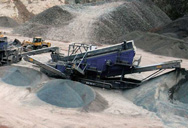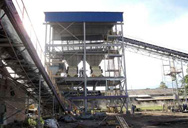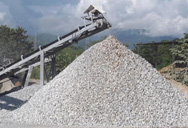


2018-10-19 The fumes that are produced during welding and hot cutting processes are a mixture of airborne gases and very fine particles. If either of these is inhaled,
Read More
Metal working processes – such as Welding Grinding – release a wide range of hazardous airborne contaminants which must be removed from the operators
Read More
2021-2-27 Cutting metals. There are several metal cutting processes which produce fumes and health effects similar to welding fume. Fume generated by these processes has
Read More
Why Extracting Welding Fumes Matters AirBench products solve welding fume and grinding dust extraction issues quickly and simply. Our market leading range of AirBench downdraught benches include heavy duty FPW type grinding dust extractor benches with multi-stage spark protection and up to H13 HEPA final dust and fume
Read More
2021-6-16 What are welding fumes? Welding fumes are a complex mixture of metallic oxides, silicates and fluorides. Fumes are formed when a metal is heated above its boiling point and its vapours condense into very fine, particles (solid particulates). Welding fumes generally contain particles from the electrode and the material being welded.
Read More
2020-3-30 Welding is the principal industrial process used for joining metals. The industrial use of welding is highly labour intensive, labour accounting for 80 to 90 per cent of production costs for all but the most automated processes. In typical industrialised countries 0.2 to 2 per cent of the total workforce is engaged in welding, the majority of welders being employed in the ship building, transport equipment manufacturing, building construction, petrochemical, mining and metallurgical industries. These workers are exposed to fumes
Read More
Welding fumes are a complex mixture of metallic oxides, silicates, and fluorides. Fumes are formed when a metal is heated above its boiling point and its vapors condense into very fine, particles (solid particulates). Welding fumes generally contain particles from the electrode and the material being welded.
Read More
2019-10-30 Fumes generated by the process of joining or cutting pieces of metal by heat, pressure, or both.
Read More
2014-6-23 Many types of metals may be found in welding and cutting fumes, including arsenic, beryllium, cadmium, chromium, cobalt, copper, iron, lead, manganese, nickel, silicates, selenium, vanadium, and zinc. Gases commonly associated with welding and cutting are carbon dioxide, carbon monoxide, nitrogen oxides, ozone, fluorine compounds, and phosgene.
Read More
Why Extracting Welding Fumes Matters. AirBench products solve welding fume and grinding dust extraction issues quickly and simply. Our market leading range of AirBench downdraught benches include heavy duty FPW type grinding dust extractor benches
Read More
Welding Fume Grinding Dust Metal working processes – such as Welding Grinding – release a wide range of hazardous airborne contaminants which must be removed from the operators breathing zone to ensure their protection. a-mac Environmental offer
Read More
The performance of displacement ventilation was evaluated in terms of concentration distributions of welding fumes and grinding particles, flow field of the supply air and temperature distributions. Large differences in vertical stratification patterns between hexavalent chromium (Cr(VI)) and other particulate contaminants were observed.
Read More
2020-3-30 Welding: fumes and gases 1 Introduction Welding is the principal industrial process used for joining metals. The industrial use of welding is highly labour intensive, labour accounting for 80 to 90 per cent of production costs for all but the most automated processes. In typical industrialised countries 0.2 to 2 per cent of the total
Read More
Welding fumes. Related Pages. Synonyms Trade Names CAS No. RTECS No. ZC2550000. DOT ID Guide. Formula. Conversion. IDLH. Ca [N.D.] See: IDLH INDEX . Exposure Limits. NIOSH REL Ca See Appendix A OSHA PEL none See Appendix G. Measurement Methods. NIOSH 7300, 7301, 7303 See: NMAM or OSHA Methods.
Read More
2020-1-8 Welding and grinding for dry application Oil mist from processing machinery The filtered, heated air then passes through a heat exchanger before being recirculated to the workshop room. All filters and units are frequency controlled for optimum functioning. THE SOLUTION Welding and grinding fumes from dry application are captured
Read More
These fumes are present in a variety of forms including sanding, spraying, powder filling, grinding, welding and chemical applications. These harmful fumes should be filtered in the work environment. A fume extractor is a system that uses a high powered fan to clean
Read More
About Us. FumeXtractors was developed by Air Cleaning Specialists, Inc., to combat the health hazards that industrial machine operators are faced with on a daily basis.. We offer a full range of fume extraction systems to remove air contaminants in facilities where welding, laser cutting, grinding
Read More
2021-5-14 Health risks from welding. Both acute and chronic health risks are associated with welding fume. Occupational lung disease, including lung cancer, is the most common health risk, but welding can also affect the eyes and skin.
Read More
2014-7-11 work conditions. A third, and commonly used way of removing the coating is to use a welding torch to burn the paint off the area to be welded. From a “production” standpoint, this is the most efficient way to remove the coating. It is quick. Compared to wire brushing or grinding
Read More
Welding Fume Grinding Dust Metal working processes – such as Welding Grinding – release a wide range of hazardous airborne contaminants which must be removed from the operators breathing zone to ensure their protection. a-mac Environmental offer
Read More
The performance of displacement ventilation was evaluated in terms of concentration distributions of welding fumes and grinding particles, flow field of the supply air and temperature distributions. Large differences in vertical stratification patterns between hexavalent chromium (Cr(VI)) and other particulate contaminants were observed.
Read More
Why Extracting Welding Fumes Matters. AirBench products solve welding fume and grinding dust extraction issues quickly and simply. Our market leading range of AirBench downdraught benches include heavy duty FPW type grinding dust extractor benches
Read More
2017-5-23 Dealing With Welding Fumes. May 23, 2017 10:10 AM; Written by: Asra Jawaid. Simply leaving the shop door open for ventilation isn’t always enough to prevent the inhalation of dangerous welding fumes. This is particularly true when hardfacing, welding
Read More
Welding fumes are a complex mixture of metallic oxides, silicates, and fluorides. Fumes are formed when a metal is heated above its boiling point and its vapors condense into very fine, particles (solid particulates). Welding fumes generally contain particles from
Read More
2014-6-23 Welding and cutting fume, dust and gases People that carry out welding and cutting have been identified as being an "at risk" group for occupational diseases arising from the exposure to dusts, gases vapours and fumes. The constituents of the fumes have a range of toxicities that, under the
Read More
About Us. FumeXtractors was developed by Air Cleaning Specialists, Inc., to combat the health hazards that industrial machine operators are faced with on a daily basis.. We offer a full range of fume extraction systems to remove air contaminants in facilities where welding, laser cutting, grinding
Read More
2021-6-21 The HSE has released a safety alert for all undertaking welding activities, including mild steel, in any industry. In order to protect workers, the HSE is strengthening its enforcement of cancer-causing welding fumes with immediate effect. The latest
Read More
Welding smoke is a mixture of very fine particles termed fumes and gasses. Many of the substances that make up welding smoke are extremely toxic. This includes chromium, nickel, arsenic, manganese, beryllium, cadmium, silica, nitrogen oxides, cobalt, copper, lead, ozone, selenium and zinc.
Read More
2014-7-11 work conditions. A third, and commonly used way of removing the coating is to use a welding torch to burn the paint off the area to be welded. From a “production” standpoint, this is the most efficient way to remove the coating. It is quick. Compared to wire brushing or grinding
Read More
